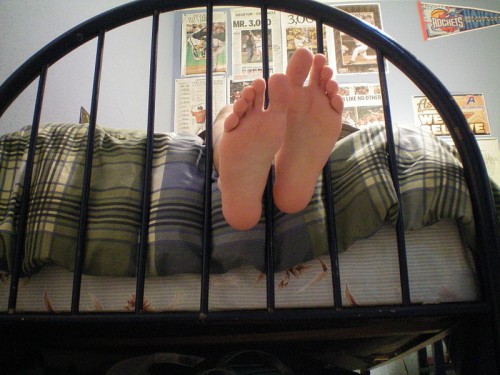 Cohabitation was never up for discussion as my husband and I dated long-distance for two-and-a-half years before we exchanged nuptials.
Shortly after we said our vows, I discovered those little roommate habits, like how he squeezes the toothpaste tube from the bottom and I prefer to squeeze the middle. Cause for divorce? We have about a 6 percent less chance of that since we didn't lived together before marriage, according to a new study on cohabitation.
Cohabitation was never up for discussion as my husband and I dated long-distance for two-and-a-half years before we exchanged nuptials.
Shortly after we said our vows, I discovered those little roommate habits, like how he squeezes the toothpaste tube from the bottom and I prefer to squeeze the middle. Cause for divorce? We have about a 6 percent less chance of that since we didn't lived together before marriage, according to a new study on cohabitation.
If you check out the headlines from the study, you might be as surprised as I was to find pretty different spins. "Study Finds Cohabiting Doesn't Make a Union Last" (The New York Times) "Report: Cohabiting has little effect on marriage success" (USA Today).
The reporters probably make different assumptions about their audience. The USA Today reporter, for instance, probably assumed that people believe cohabitation will increase the likelihood of a couple's divorce.
Past research -- using decades-old data -- found significantly higher divorce rates for cohabitors, defined as "not married but living together with a partner of the opposite sex." But now, in an era when about two-thirds of couples who marry live together first, a different picture is emerging in which there are few differences between those who cohabit and those who don't.
Of those married 10 or more years, 60% of women and 62% of men had ever cohabited; 61% of women and 63% of men had cohabited only with the one they married. Meanwhile, 66% of women and 69% of men married 10 years had never cohabited.
The Times story ends up focusing heavily on marriage, looking factors like race, ethnicity and sex.
The study found that, over all, 62 percent of women ages 25 to 44 were married and 8 percent were cohabiting. Among men, the comparable figures were 59 percent and 10 percent.
In general, one in five marriages will dissolve within five years. One in three will last less than 10 years. Those figures varied by race, ethnicity and sex. The likelihood of black men and women remaining married for 10 years or more was 50 percent. The probability for Hispanic men was the highest, 75 percent. Among women, the odds are 50-50 that their marriage will last less than 20 years.
The stories contain some interesting data about people who cohabitate compared to people who marry, but neither story explores why couples might cohabitate or not cohabitate. There are probably some pretty obvious explanations. Some do it for money, others do it for convenience, maybe for (ahem) intimacy. And then there are those who don't because of potential insecurity (see headline), or, you know, because they believe their religion prohibits them from such an endeavor.
On that last point, we do know from the study that they tested one measure of religiosity. Granted, the measure isn't very strong. They asked survey respondents whether religion is very important in their lives when it would probably be more interesting to test their house of worship attendance.
For instance, one researcher suggests that Christians who attend church weekly show the lowest levels of divorce. The data from this survey doesn't say much about whether someone who indicates that religion is very important will be just as likely to get divorced.
Nevertheless, the religion angle is there waiting to be gleaned. Check out this data from tables 1-2 of the survey.
* Very religious women: 52% married, 7% cohabitating, 32% never married
* Not religious women: 35% married, 14% cohabitating, 40% never married
* Very religious men: 51% married, 8% cohabitating, 35% never married
* Not religious men: 32% married, 12% cohabitating, 48% never married
Here's more from the study that might help show correlation between religion and the state of the union:
Similar patterns in marital or cohabiting status by importance of religion were found for non-Hispanic men and women, black men, and Hispanic men and women. Only black women (Table 5) did not show this pattern.
As stated above, this report presents descriptive statistics, not causal models, so these data alone do not demonstrate that importance of religion causes these differences in marital patterns. But literature based on other data sources ... suggests that religious involvement (also known as religiosity) is often associated with marriage, cohabitation, and related behaviors and attitudes, and many of religion's effects may first occur in the early decades of life.
What does this mean? Religious people are most likely to be married and unlikely to cohabitate while nonreligious people are as likely to be single as to be married. When matters of love, commitment, and family come together, religion matters.
